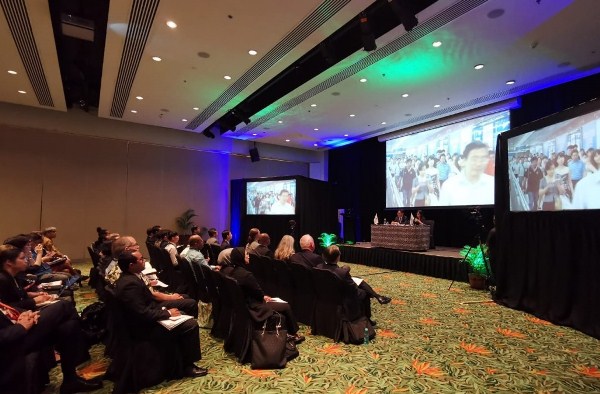Despite heightened global risks and stronger external headwinds, the Association of Southeast Asian Nations Plus Three (ASEAN+3) region is expected to remain resilient, growing at only a slightly slower pace in 2019-2020 as compared with last year.
According to the ASEAN+3 Regional Economic Outlook (AREO) 2019, a report released May 1 by the ASEAN+3 Macroeconomic Research Office (AMRO), regional growth is expected to moderate slightly to 5.1% this year and 5.0 in 2020 from 5.3% last year.
In the near term, the report pointed out that the risks confronting the region are mainly external, and the biggest risk is still the escalation of global trade tensions.
The region could also be hit by volatility shocks from turbulent financial markets given that expectations can change suddenly.
According to the report, the region is well positioned to weather the headwinds from the slowdown in external demand, propped up by intact long-term fundamentals, robust consumption and growing intra-regional trade amid a rising middle class, rapid urbanization, and adoption of digital technology.
To address near-term risks and sustain growth, regional policymakers should calibrate a policy mix corresponding to their respective economies’ cyclical positions in the business and credit cycles, as well as their external positions and financial vulnerabilities, the report suggested.
AMRO chief economist Hoe Ee Khor urged regional policymakers to stand ready to use available policy space to ease monetary and fiscal policies to mitigate the downside risks and support the economy if external conditions were to worsen.
To support the region’s growth prospects and foster resilience, ASEAN+3 should prioritize longer-term policies focused on building capacity and connectivity to leverage on the Fourth Industrial Revolution and sustain growth in the new economy, the report further stated.
Three key drivers will shape capacity and connectivity priorities in the region: new demands arising from the global transition to the Fourth Industrial Revolution, East Asia’s maturing and increasingly affluent populations with an expanding middle class, and the tension between burgeoning intra-regional demand and headwinds from protectionist tendencies in the trade and technology space.
Against this backdrop, developing economies in the region continue to face three key challenges to growth: the funding, foreign exchange, and factors gaps.
The funding gap captures the shortfalls between the low domestic savings and large investment needs of lower-income economies.
The foreign exchange gap has to do with the financing constraint on emerging economies arising from the need to accumulate foreign reserves to mitigate risks related to sudden capital outflows.
The factors gap captures non-financial constraints, including the need to develop human capital, expertise, technological capacity, and governance frameworks.
“Rapid economic growth in the ASEAN+3 region will generate new infrastructure demand and sharpen the collective focus on meeting projected investment shortfalls,” said Khor. “Transition to the technology-heavy and services-driven new economy could accentuate strains arising from conventional gaps facing the region.”
To address these challenges, ASEAN+3 economies need to leverage on intra-regional savings and investments; strengthen regional financial safety nets, including the Chiang Mai Initiative Multilateralization; and redouble efforts to develop ASEAN+3’s technological capacity, professional expertise in various fields, and further strengthen institutions for growth and governance, the report said.
ASEAN+3 includes the 10 members of ASEAN (Brunei Darussalam, Cambodia, Indonesia, Laos, Malaysia, Myanmar, the Philippines, Singapore, Thailand, and Vietnam) plus its trading partners China, Japan, and South Korea.
Photo courtesy of AMRO









